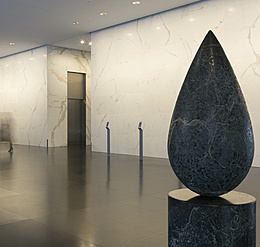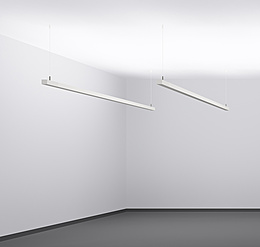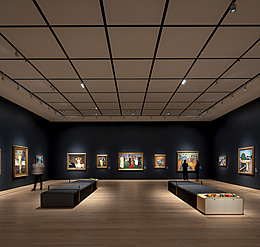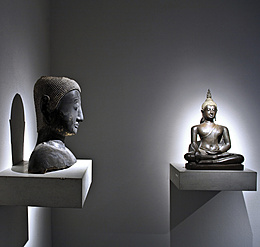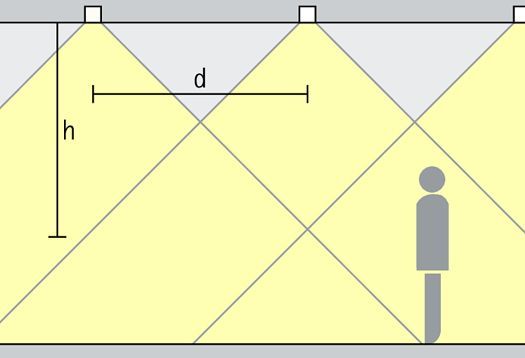
Graphic depiction of a luminaire arrangement in the ceiling.
The arrangement of luminaires in relation to each other and their distance from walls is part of good lighting design. In the concept and design phase of a project, rules of thumb help to determine the number and arrangement of downlights, spotlights and wallwashers even without a lighting calculation.











